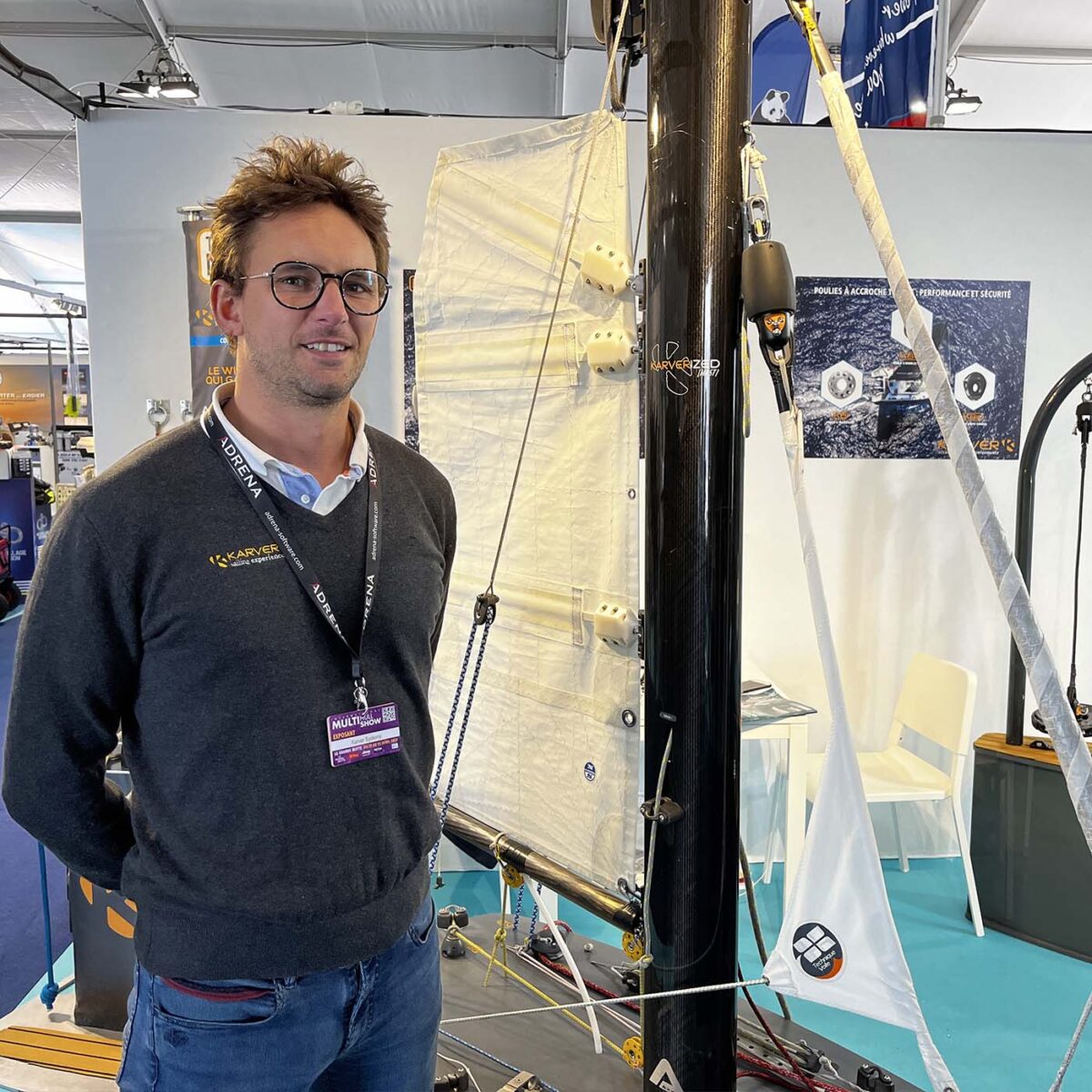
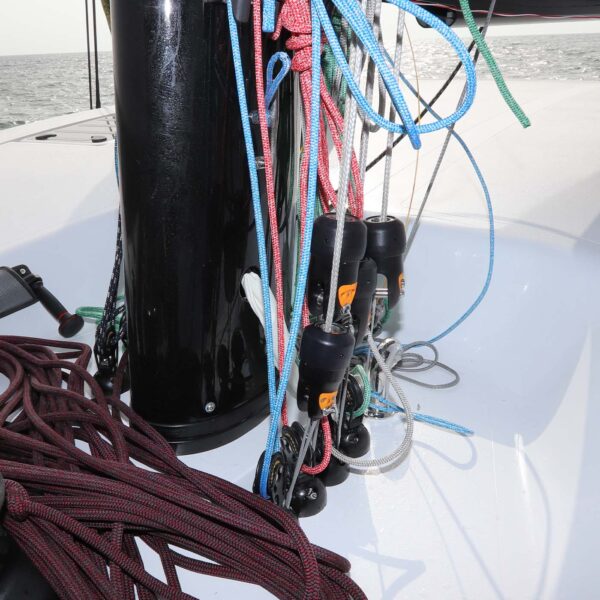
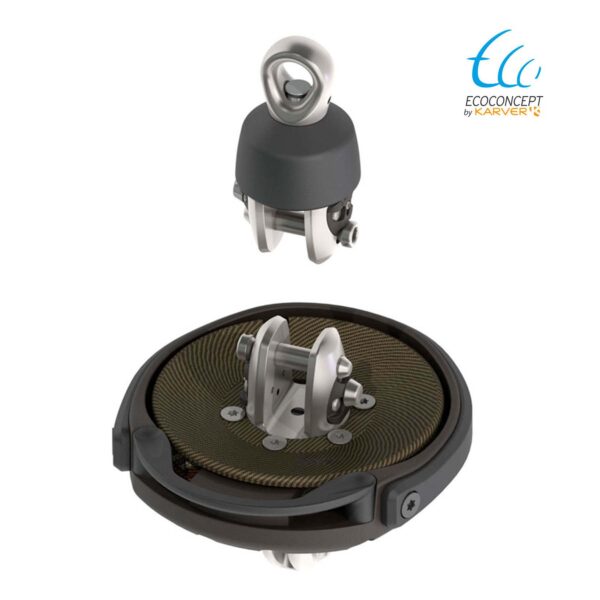
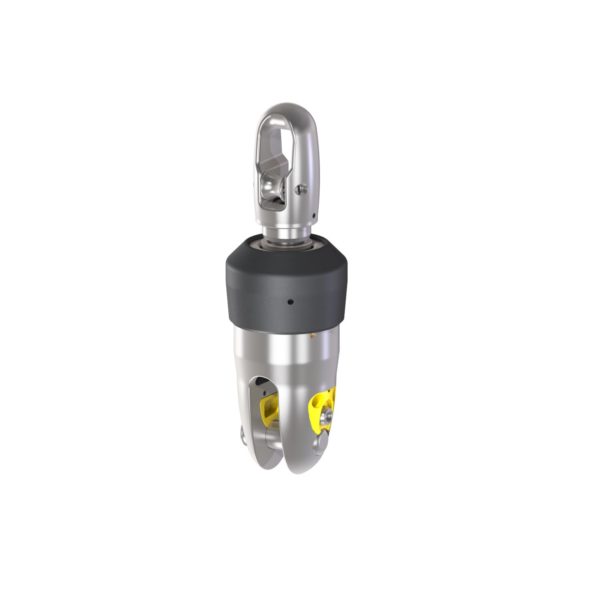
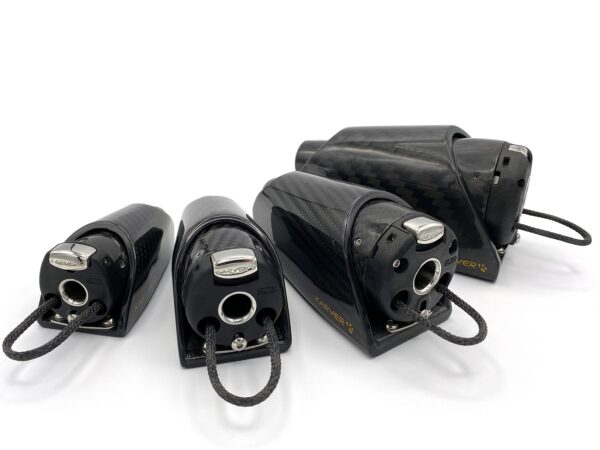
Staysail on furler – Reliability, safety, performance, the winning Karver trio
On the occasion of the International Multihull Show in La Grande Motte, Alois Kerduel demonstrated this to us and revealed all the secrets of a staysail on a Karver furler.
The Karver demonstrators
If you haven’t yet stopped by the Lorient showroom and missed the team at one of the many shows they attend, you may not have seen the famous Karver demonstrators yet. Mainsail, headsails, winches, blocks, furlers, jammers, they allow in a few moments understanding all the relevance of proven technical solution.
Alois, why install a staysail on our modern boats ?
Today’s sailboats commonly have headsails with low overlap, especially on multihulls. Despite everything, in order not to sail partially furled sails, which is never very effective and is damaging to the sail, many owners wish to have a staysail. The advantage then is that when the wind rise up, you roll up the genoa to switch directly on the staysail. But when she is in position and you are under the genoa, it is hampered when tacking, and the two sails damage each other. By combining several pieces of Karver fittings, a removable staysail is the best solution to overcome this problem. The furled sail is hoisted, either with a halyard or with a lock, in both cases, to be able to tension it perfectly and draw its full potential. It can either be left in position, or stored in its bag, and therefore stocked up for the most performance-oriented sailors. Even once in position, if you want to tack under the genoa, by dropping the tack line you can bring the sail rolled up along the mast, thus freeing up space. We can then put it back in place, still without having left the cockpit.
How do you get the right luff tension ?
The lock if it has a cost, has the immense advantage of eliminating any elongation of the halyard, and with an extremely stiff Dyneema tack tackle, we obtain a truly perfect luff. The tackle can be in 2:1, or even ideally 3:1, which then makes it possible to reduce both the diameter of the line and the size of the related ascender. To do this, in the Karver range we have the KJ10, 15 and even 25 jammers, without forgetting the carbon KJCs, and the KJC Woods for lovers of beautiful yachting. In any case, the three jaws block the line perfectly over its entire circumference, without degrading it. Moreover, they fulfill their function so well that you have to take up some tension on the winch before reopening them, directly or remotely, to release the forestay.
Is there a risk of untimely unwinding of the staysail ?
No, we already have a blocking system on the furler itself, which is ideal for transition phases. Then, when not in use, it is recommended to hit the two ends of the furler’s line, either on a mooring cleat, or on two jammers, one for the outward journey, the other for the return. This is extra safety, in addition to the anti-rotation, to prevent the staysail from unrolling when it is left rolled up, when you are under the genoa for example.
Do you have several versions of furlers ?
Yes, we are on the third generation, and of course we have the standard range which already offers a carbon continuous line wheel. On the Racing version, the casing is no longer in reinforced ABS but also in carbon with a 2:1 or 3:1 friction sheave underneath, which is exactly what you want for a staysail. We also have the Ecoconcept version in which we replace all that is carbon with linnen fibre. Finally there is a structural model. Of course, the sail is furled there, but it is also an integral part of the rigging. Any type of sail triangulation can of course be concerned : Staysail, ORC, J2, J3, J4… On the same high and low system, you can put the sail of your choice, which can then be easily stored in your bag.
Precisely, what luff do you recommend ?
The staysail will most often be fixed, sewn, on an anti-twist cable, which from the bottom where the furler is located, allows the rotation to be transmitted over the entire height of the sail, up to the head swivel. On good quality cables, a turn at the bottom results in a near full turn at the top. If we are on a lesser quality line, the sailboat or the rigger can put a little preload to improve their performance.
Compared to the releasable forestay systems that we used to know in the past, metal cables on which we then hoisted a staysail on snap shackle, with the Karver solution, the sail is put in position at the same time as the forestay and only when wished. A simplification that preserves the sails, is a guarantee of performance, but also of safety for any crew, whether racing or cruising.

